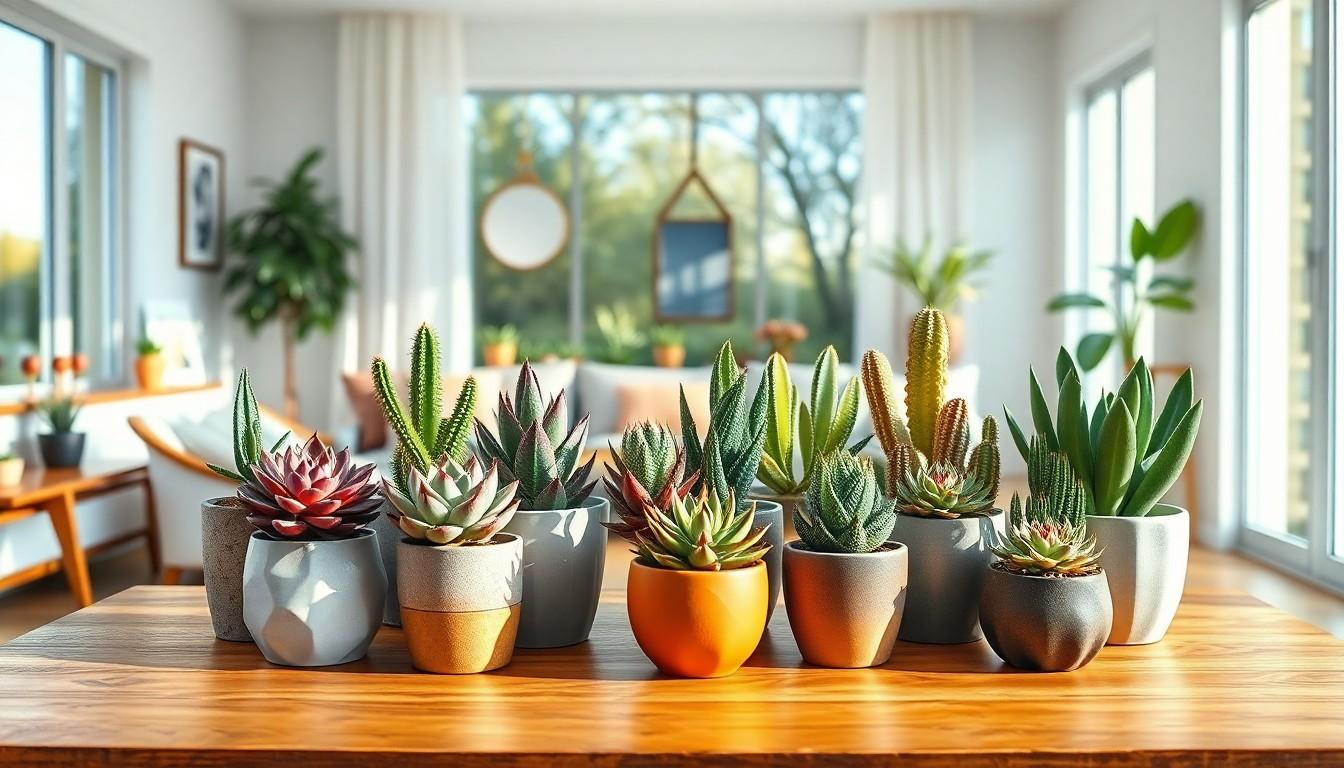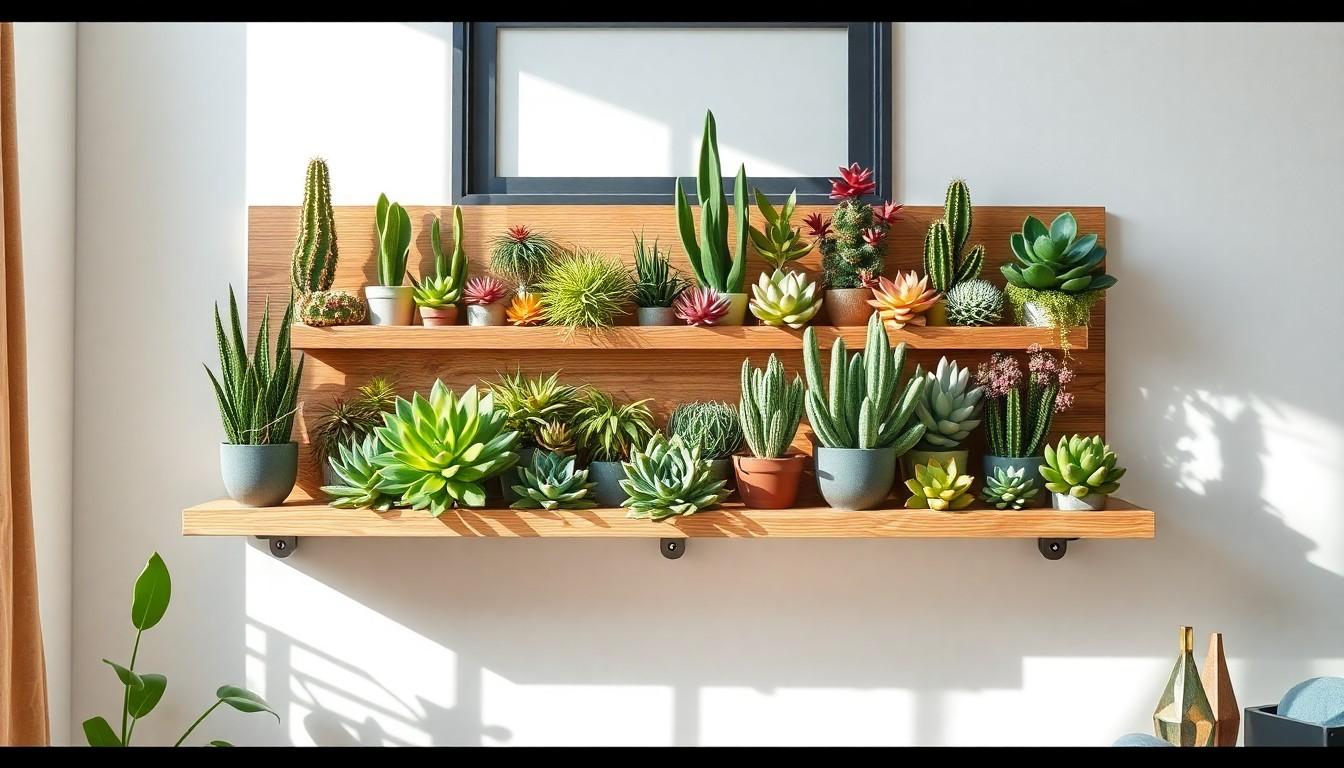If you’re looking to add a splash of green to your home without the hassle of high-maintenance plants, succulent cactus house plants are your new best friends. These spiky little wonders not only brighten up your space but also thrive on neglect—perfect for anyone who’s ever forgotten to water a plant (no judgment here).
Imagine having a plant that practically begs to be left alone while still adding a touch of desert charm to your living room. With their quirky shapes and vibrant colors, succulents and cacti bring life to any corner, all while being the low-maintenance divas they are. So, whether you’re a seasoned plant parent or just starting out, these resilient beauties are ready to make your home a little greener and a lot more fun.
Overview of Succulent Cactus House Plants
Succulent cactus house plants offer a versatile option for home decor. These plants thrive in dry conditions and require minimal watering, making them suitable for busy lifestyles. Vibrant colors and unique shapes contribute to their charm, enhancing any indoor environment.
A variety of succulent cacti exist, including popular choices like the Echinopsis and the Golden Barrel Cactus. Each species exhibits distinct characteristics, appealing to different aesthetic preferences. Low maintenance requirements attract both novice and seasoned plant owners alike.
Adaptability makes these plants suitable for various lighting conditions. Most prefer bright, indirect light, but some can tolerate lower light levels. Understanding light needs helps ensure healthy growth.
Potting considerations are crucial for succulent cacti. Well-draining soil facilitates air circulation and prevents root rot. Selecting pots with drainage holes provides further moisture control, essential for these drought-resistant plants.
Pest resistance marks another benefit. While they can develop issues such as mealybugs and scale, their hardy nature often minimizes severe infestations. Regular inspections help in early detection and easy management.
Propagation provides an exciting way to expand a collection. Most succulents and cacti reproduce through cuttings or offsets, allowing for straightforward growth. Sharing these plants with friends and family fosters a sense of community among plant enthusiasts.
Incorporating succulent cactus house plants into home decor offers both aesthetic and practical advantages. Their resilience and vibrant presence create a lively atmosphere while requiring minimal effort to maintain.
Benefits of Succulent Cactus House Plants

Succulent cactus house plants offer numerous advantages, making them a top choice for home decor. Their unique qualities contribute to both aesthetic appeal and practical benefits.
Low Maintenance Requirements
Low maintenance characterizes succulent cactus house plants. They thrive in arid conditions and require minimal watering, often needing only a deep soak every two to three weeks. Watering schedules adapt effortlessly to busy lifestyles. Light requirements are also straightforward, with many varieties flourishing in bright, indirect light. Choosing well-draining soil and pots with drainage holes further simplifies care. Even novice plant owners find it easy to keep these plants healthy and thriving, allowing them to enjoy greenery without overwhelming commitment.
Air Purification Qualities
Air purification stands out as another major benefit of succulent cactus house plants. They absorb carbon dioxide during the day, releasing oxygen that enhances indoor air quality. Certain varieties, such as the Echinopsis, contribute to reducing airborne pollutants and toxins. These plants support overall well-being, making environments feel fresher and more inviting. Incorporating them into living spaces not only adds beauty but improves air quality, creating a healthier atmosphere for everyone.
Popular Types of Succulent Cactus House Plants
Succulent cactus house plants offer a variety of choices that cater to different aesthetics and care preferences. Two notable types include Echinopsis and Mammillaria.
Care Tips for Succulent Cactus House Plants
Caring for succulent cactus house plants ensures they thrive in your home environment. Proper attention to watering, light, and temperature significantly contributes to their health and longevity.
Watering Guidelines
Watering these plants requires a careful approach. Allow the soil to dry out completely between waterings, typically every two to three weeks. Overwatering can lead to root rot, which poses a serious threat. When watering, soak the soil thoroughly until water drains from the bottom of the pot. During the growing season, increase frequency slightly but still monitor soil moisture. In colder months, reduce watering to avoid unnecessary stress on the plant. Trusting your instincts and observing the soil’s condition leads to more successful hydration.
Light and Temperature Needs
Light plays a crucial role in the health of succulent cactus house plants. Most varieties prefer bright, indirect light, thriving near south or west-facing windows. Direct sunlight can often scorch their leaves, causing damage. During colder months, ensure they receive ample light to promote healthy growth. Temperature stability is equally important; most cacti prefer daytime temperatures between 70°F and 100°F, while nighttime temperatures should stay around 60°F to 70°F. Extreme temperature fluctuations stress the plants, so maintaining consistency helps support their vitality.
Common Problems and Solutions
Maintaining succulent cactus house plants is simple, yet issues may arise. Understanding common problems and their solutions ensures a thriving indoor garden.
Pest Issues
Pests like mealybugs and scale may affect succulent cacti. These pests often hide in crevices, making early detection crucial for prevention. Regularly inspect plants and isolate any infested specimens. Using insecticidal soap or neem oil effectively eliminates these pests. Spraying for a few consecutive days improves results. Cleaning tools and pots helps prevent further infestations. Keeping plants healthy boosts their resilience against pests.
Overwatering Symptoms
Overwatering is a common issue with succulents. Signs of overwatering include yellowing leaves, mushy stems, and root rot. Inspecting the soil is crucial; it should dry completely between waterings. Adjusting the watering schedule can resolve this issue. If symptoms appear, reduce watering frequency and allow the plant to recover. Repotting in fresh, well-draining soil may be necessary for severely affected plants. Monitoring environmental factors also aids in preventing overwatering.
Conclusion
Succulent cactus house plants stand out as a fantastic choice for anyone looking to enhance their living space with minimal care. Their unique beauty and resilience make them perfect companions for busy lifestyles. With a variety of species to choose from, there’s a succulent or cactus that can fit any aesthetic preference.
Proper care and attention to their specific needs ensure these plants thrive, providing both visual appeal and air purification benefits. Their low-maintenance nature allows both novice and experienced plant owners to enjoy the charm they bring without the stress of constant upkeep. Embracing these hardy plants can transform any home into a vibrant oasis.

